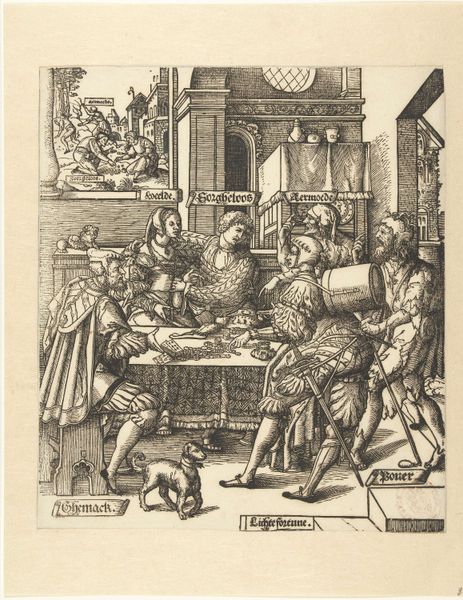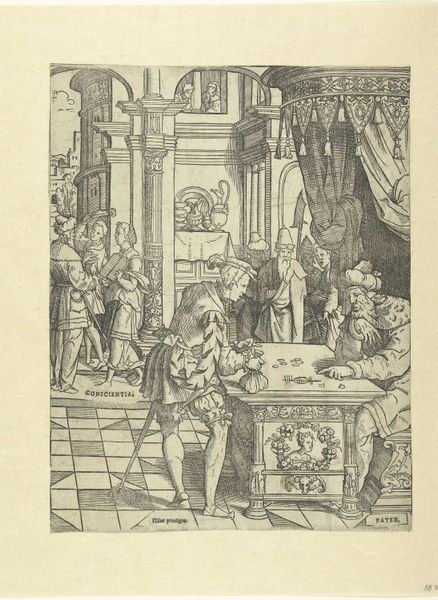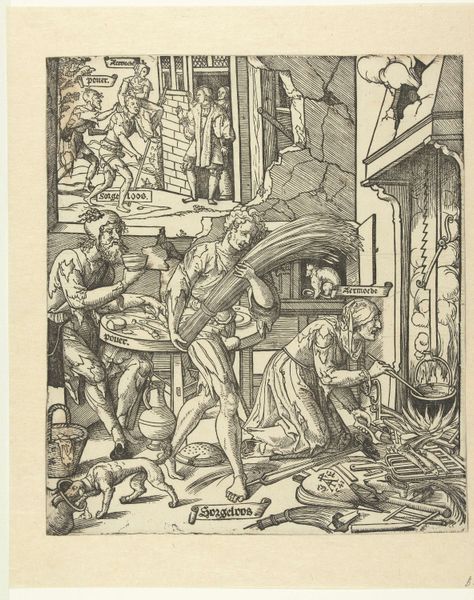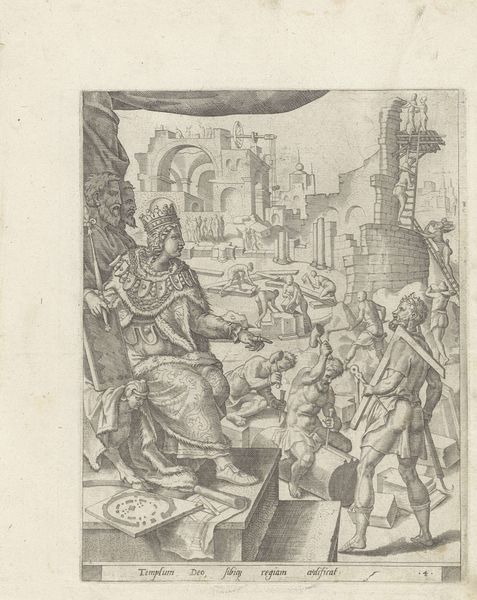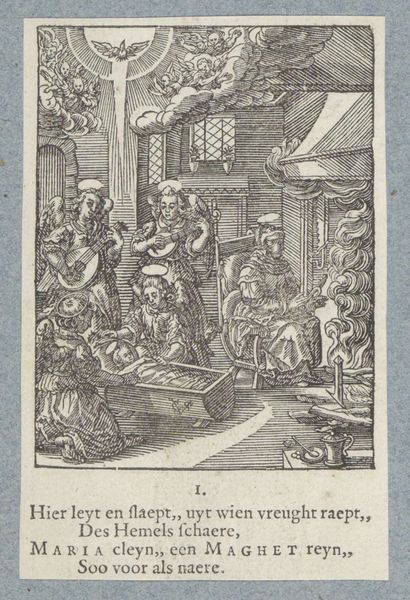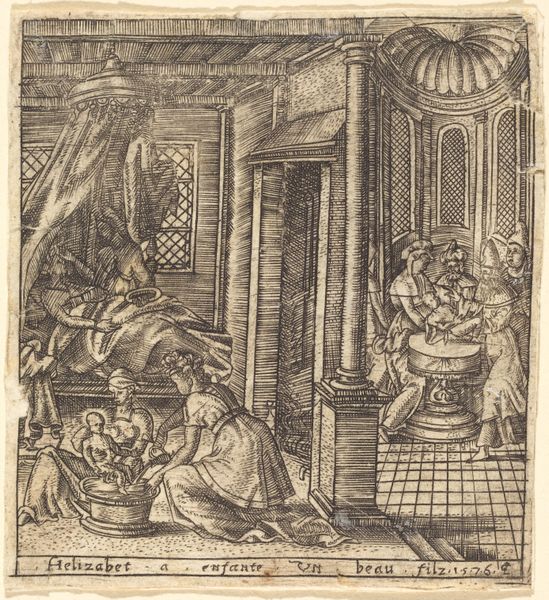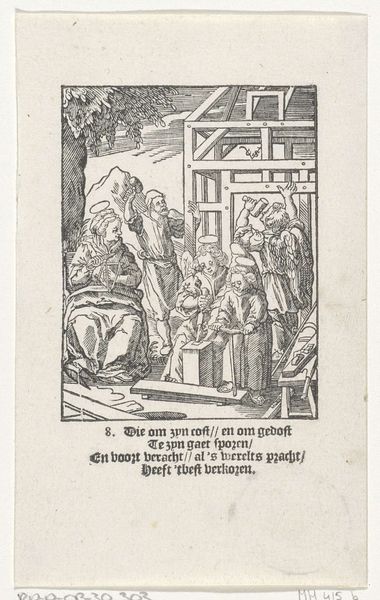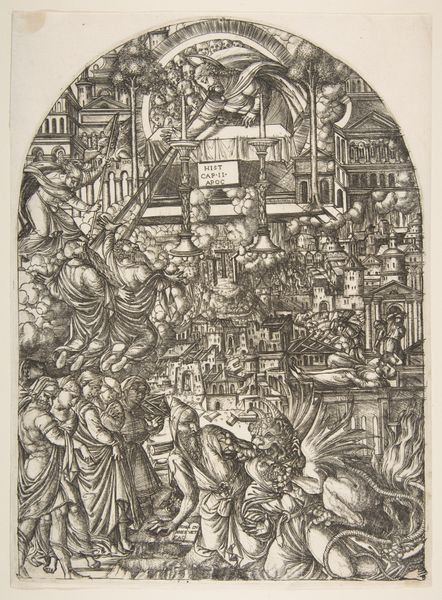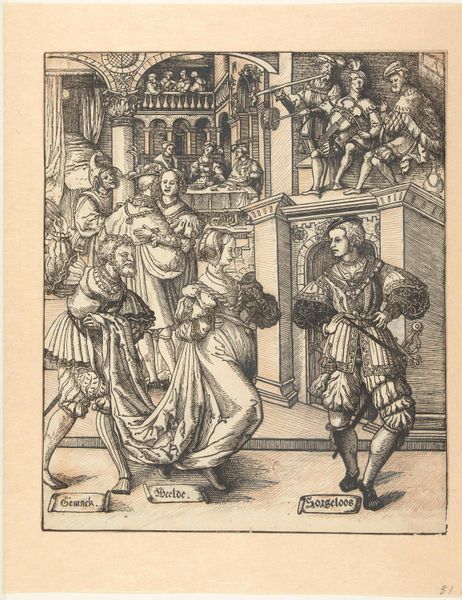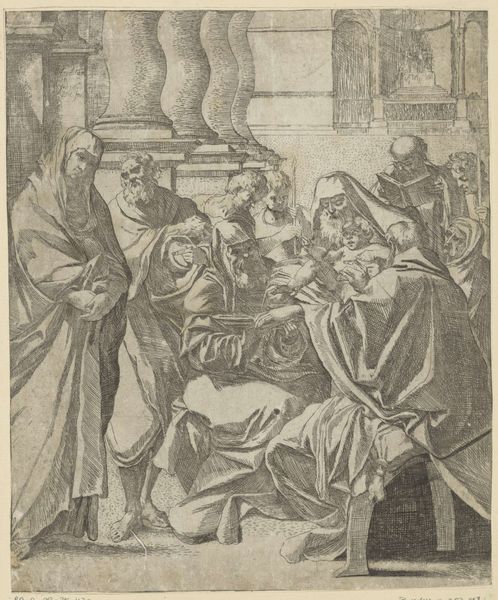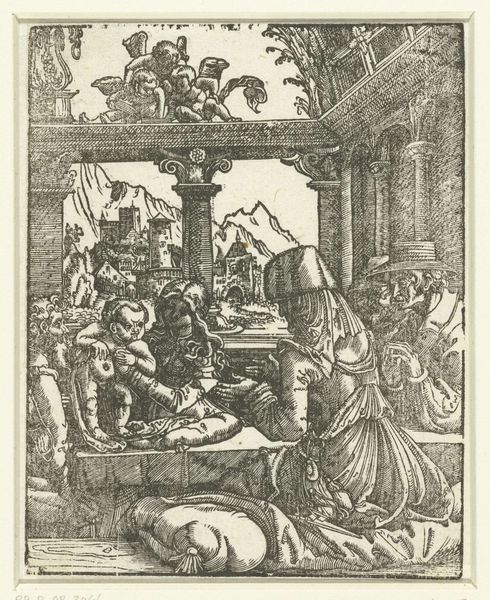
print, engraving
#
narrative-art
#
baroque
# print
#
figuration
#
line
#
history-painting
#
engraving
Dimensions: height 370 mm, width 265 mm
Copyright: Rijks Museum: Open Domain
Curator: This print, dating around 1720 and attributed to Cornelis Anthonisz, is held here at the Rijksmuseum. Titled "Spotprent op de Actionisten", it serves as a fascinating commentary on the financial speculators of the time. Editor: Immediately striking is its busyness. The stark lines of the engraving create a world teeming with figures and symbols, a veritable density that borders on overwhelming. The monochrome amplifies this tension, doesn't it? Curator: Precisely. It reflects a period of intense economic frenzy. "Actionisten" refers to shareholders, particularly during speculative bubbles like the Mississippi Company scheme. The print satirizes the reckless pursuit of wealth and the social consequences of financial excess. It portrays those caught up in the craze as figures embodying various vices. Editor: Yes, and the composition is remarkable in how it corrals the chaos. The table is a focal point—a space for the players, if you will. And I see three panels, and in each panel different characters are engaged. It's all rendered through extremely fine, almost feverish lines. It’s not immediately legible. I have to ask, is the somewhat veiled quality of it deliberate, meant to mirror the slippery morality it is meant to portray? Curator: Indeed. Each panel encapsulates a specific vice. One, of scheming; the second, a loss of money pouring out; the third is gluttony and avarice. The dog in the forefront signals the loss of humanity—its meaning shifts from a symbol of loyalty and fidelity into being emblematic of people’s obsession with their personal appetite. This form of social critique in art had deep roots during this time. It really makes this piece invaluable for comprehending the public sentiment during the tumultuous financial years of the 18th century. Editor: And note the dense text filling the bottom—anchoring it all in linguistic context, almost as an instruction manual for the image. All of that is incredibly insightful about the broader political culture of the time. A piece like this exemplifies the power of the image to encapsulate widespread societal attitudes. Curator: It shows the potency and function of graphic arts at the time as vehicles of public opinion. Editor: A pointed look at a chaotic moment and the perils of unchecked greed, quite stylishly etched for posterity!
Comments
No comments
Be the first to comment and join the conversation on the ultimate creative platform.
